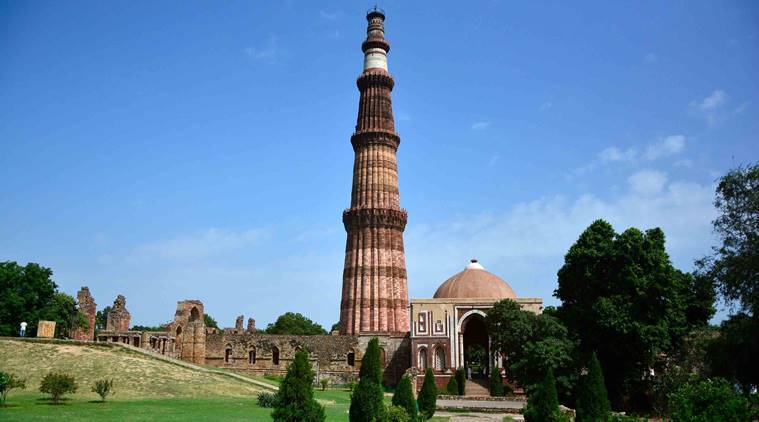
The Qutb Minar, also spelled as Qutub Minar and Qutab Minar, is a minaret and "tower" that forms part of the Qutb complex. It is a UNESCO World Heritage Site in the Mehrauli area of New Delhi, India. It is one of most visited tourist spots in the city due to it being one of the earliest that survives in the Indian subcontinent. It can be compared to the 62-metre all-brick Minaret of Jam in Afghanistan, of c.?1190, which was constructed a decade or so before the probable start of the Delhi tower. The surfaces of both are elaborately decorated with inscriptions and geometric patterns. The Qutb Minar has a shaft that is fluted with "superb stalactite bracketing under the balconies" at the top of each stage. In general, minarets were slow to be used in India and are often detached from the main mosque where they exist. This tower is a symbol of the synthesis of traditional Islamic architecture and Southwestern Asian design. The newly arrived Muslims from the Islamic West escaped the Mongol Empire and emigrated to India, where they constructed religious centers. The Qutb Minar serves as a central marker to these new Muslim communities as well as being a reminder of Islam's presence in the area. The architecture of the minaret varies greatly from that of the typical style and design of the mosques constructed in the Middle East. The style of these structures is heavily influenced by the local architecture such as the Indic temples. This affected the different materials, techniques, and decoration that were used in the construction of the Qutb Minar. The minaret is unique in that historically, these tower minarets were uncommon in South Asian-Islamic design until the 17th century. This lag is due to the slow adoption of the typical Middle Eastern style in India. It is also detached from the main mosque, showcasing how the native culture affected the design of a Middle Eastern structure. The Qutb Minar is seen as the "earliest and best example of a fusion or synthesis of Hindu-Muslim traditions." The minaret was constructed by Hindu laborers and craftsmen, but overseen by Muslim architects.[12] This led to a construction that synthesized both Hindu and Islamic religious architecture. Since the craftsmen were Hindu and unfamiliar with the Quran, the inscriptions are a compilation of disarranged Quranic texts and other Arabic expressions.